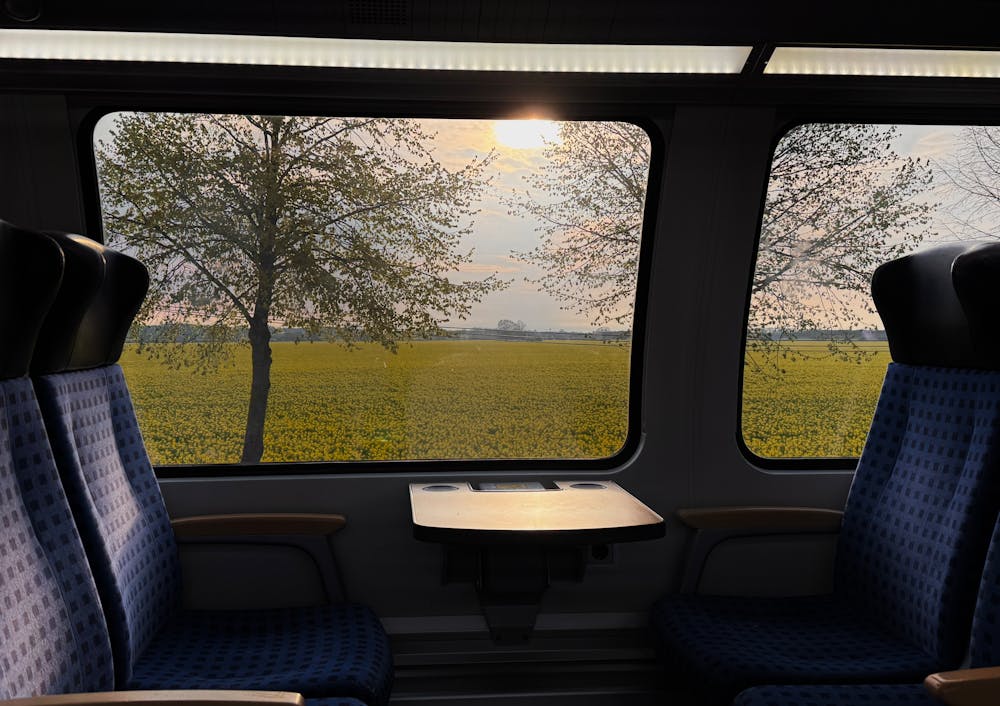Europe’s love affair with rail travel is deeply rooted in its history, culture, and convenience. From grand neoclassical termini to sleek, modern stations designed for speed and efficiency, the continent’s train hubs are far more than mere transport centres. They are architectural marvels, community focal points, and gateways to adventure. Whether you’re catching a regional commuter train or embarking on a scenic international journey, these railway giants are where stories begin.
This guide explores some of the most iconic train hubs in Europe—places where time slows down just long enough for a croissant and coffee before whisking you away to a new destination. It’s a tribute to the romance of rail, and a practical overview for anyone keen to explore Europe one station at a time.
Vienna Hauptbahnhof, Austria
Blending modern design with classical Austrian efficiency, Vienna Hauptbahnhof is a striking central station that’s also a major rail junction for Central and Eastern Europe. Opened in phases between 2012 and 2015, the station features a stunning angular roof, sleek glass facades, and an open-plan layout that makes navigation easy even for first-time visitors.
Vienna’s central station is more than a transit point—it houses a shopping centre, restaurants, and even a hotel. From here, travellers can hop aboard local S-Bahn trains or long-distance services to destinations like Munich, Budapest, and Zurich. The station is operated by OBB, Austria’s national railway company, known for its punctual service, high-speed Railjet trains, and commitment to sustainability.
Zurich Train Station, Switzerland
In the heart of one of Europe’s most picturesque cities lies Zurich HB train station, the largest and busiest railway station in Switzerland. “HB” stands for “Hauptbahnhof,” or “main station,” and Zurich’s certainly lives up to that title. With over 2,900 trains passing through daily, it’s a vital part of the Swiss and wider European rail networks.
First opened in 1847, Zurich HB has evolved into a sprawling complex that combines history with modern convenience. Its grand entrance hall often doubles as an event space, while beneath it lies the “ShopVille” mall, open every day of the year, making it as much a retail destination as a transport hub.
From Zurich HB, you can take high-speed trains to Milan, regional services into the Alps, or even scenic journeys like the Glacier Express, which begins nearby. It’s a station designed with Swiss precision and international flair.
Gare du Nord, Paris, France
Serving northern France as well as international destinations including London, Brussels, and Amsterdam, Gare du Nord truly connects Europe.
The impressive façade features neoclassical columns and statues representing European cities, hinting at the station’s continental reach. Inside, platforms stretch beneath high-arched roofs, while digital timetables and self-service kiosks provide a touch of modernity.
As a major Eurostar terminal, Gare du Nord is often the first impression of Paris for international visitors arriving by train. Despite the crowds, the station exudes charm and is undergoing a large-scale renovation to further improve flow and functionality by the 2024 Olympics.
Berlin Hauptbahnhof, Germany
If you’re a fan of futuristic design, Berlin Hauptbahnhof is the ultimate railway experience. Opened in 2006 on the site of the former Lehrter Bahnhof, this gleaming glass-and-steel structure is Europe’s largest multi-level train station. Trains arrive and depart from both upper and lower levels, connected by a complex network of escalators and lifts.
Beyond the striking architecture, Berlin’s central station is a marvel of efficiency, offering high-speed ICE trains, regional connections, and cross-border services to countries like Poland and the Czech Republic. The concourse is packed with cafés, shops, and amenities, making it a lively place to spend time—even if you’re not travelling.
For visitors to Germany’s capital, Berlin Hauptbahnhof offers quick access to the city centre and surrounding districts, putting you right in the heart of the action.
St. Pancras International, London, UK
More than just a station, St. Pancras International is a symbol of London’s Victorian splendour and European connectivity. After a major renovation in the early 2000s, it re-emerged as a dazzling hub for Eurostar services to Paris, Brussels, and Amsterdam, as well as domestic East Midlands and Thameslink trains.
The station’s red-brick Gothic façade and clock tower evoke the golden age of rail travel, while inside, soaring iron-and-glass ceilings frame a modern terminal lined with boutique shops, champagne bars, and even a branch of Fortnum & Mason.
St. Pancras is a point of pride for many Londoners, not only because of its design and heritage, but also for its role in making international rail travel easier, faster, and more glamorous than flying.
Milano Centrale, Italy
Milano Centrale isn’t just a transport hub—it’s an architectural statement. Serving over 300,000 passengers daily, it’s the second-busiest station in Italy and a key departure point for high-speed trains to Rome, Venice, and Florence. Inside, travellers are greeted with marble staircases, grand halls, and soaring ceilings that create a feeling of drama and anticipation.
Beyond its beauty, Milano Centrale is known for its practical amenities, including lounges for high-speed rail users, a vast selection of eateries, and easy access to Milan’s metro and tram network.
Antwerp-Central, Belgium
Completed in 1905, Antwerp-Central is a mix of stone, iron, and glass, with an awe-inspiring domed roof and elaborate interiors that make you feel like you’ve stepped into a palace.
Despite its vintage look, the station functions smoothly and accommodates high-speed Thalys services as well as local and intercity trains. The multi-level layout ensures an efficient flow of trains and passengers, and a recent renovation preserved the original features while upgrading the infrastructure.
Antwerp-Central has consistently been ranked among the most beautiful train stations in the world—and for good reason.
Why Europe’s Train Hubs Matter
Train stations in Europe are more than places to catch a ride—they’re cultural landmarks in their own right. Each one tells a story of the city it serves, from Zurich’s pristine order and Vienna’s modernism to the romantic legacy of Paris and London. These hubs are designed not only for movement but also for moments—pauses in your journey where you sip a coffee, admire the architecture, or watch the world go by. So next time you travel, don’t just rush through—take a moment to appreciate the journey as much as the destination.

